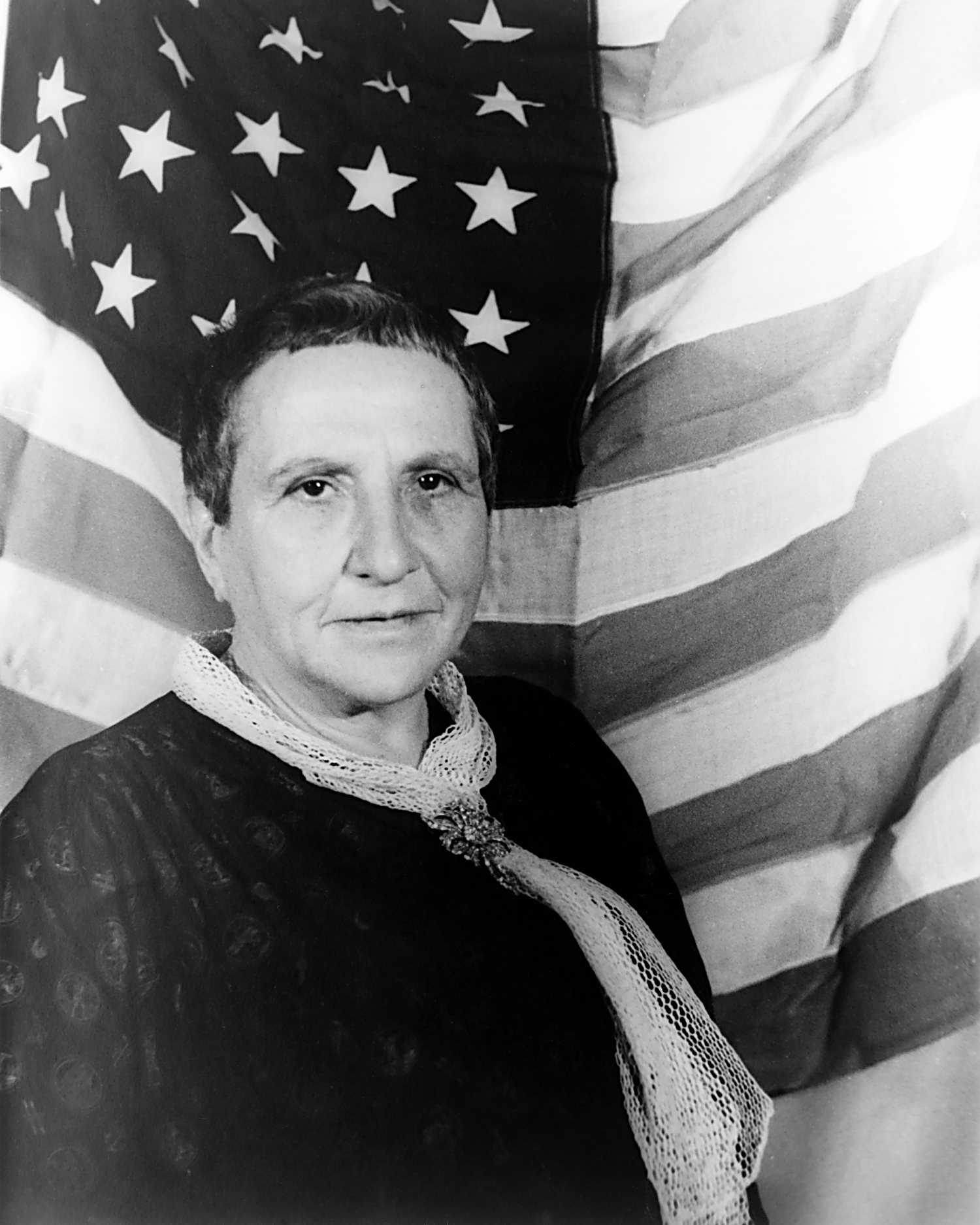Gertrude Stein frasi celebri
Gertrude Stein: VII; p. 239
Autobiografia di Alice Toklas
Origine: Citato in Ernest Hemingway, Festa mobile, traduzione di Vincenzo Mantovani, Mondadori, Milano, 1993, p. 64.
“La pace ha i suoi terrori peggio che la guerra.”
Gertrude Stein: VII; p. 236
Autobiografia di Alice Toklas
Gertrude Stein Frasi e Citazioni
“Assomiglia a quei barcaioli del Mississippi che descrive Mark Twain.”
Gertrude Stein: VII; p. 219
Autobiografia di Alice Toklas
IV; p. 77
Autobiografia di Alice Toklas
“E cosí è fatto Hemingway: ha l'aria moderna e un sentore di museo.”
Gertrude Stein: VII; p. 220
Autobiografia di Alice Toklas
VII; p. 213
Autobiografia di Alice Toklas
“Scrivo per me stessa e per gli sconosciuti.”
Origine: Citato in Fredric Jameson, Firme del visibile. [Hitchcock, Kubrick, Antonioni] (Signatures of the Visible, 1990), traduzione di Daniela Turco, a cura di Gabriele Pedullà, Donzelli, Roma, 2003, p. 23 https://books.google.it/books?id=XIepkdFhIlYC&pg=PA23#v=onepage&q&f=false. ISBN 88-7989-766-7
“Hemingway, i commenti non sono letteratura.”
Gertrude Stein: VII; p. 223
Autobiografia di Alice Toklas
“Braque e James Joyce sono gli incomprensibili che tutti capiscono.”
Picasso: VII; p. 215
Autobiografia di Alice Toklas
Origine: Citato da Jonah Lehrer Proust era un neuroscienziato, Codice edizioni ISBN 978-887578096-8 p.144
Gertrude Stein: Frasi in inglese
"Miss Furr and Miss Skeene"
This story about two lesbians, written in 1911, and published in Vanity Fair magazine in July 1923, is considered to be the origin of the use of the term "gay" for "homosexual", though it was not used in this sense in the story.
Geography and Plays (1922)
“I have always noticed that in portraits of really great writers the mouth is always firmly closed.”
What Are Masterpieces and Why Are There So Few of Them (1936), Afterword of a later edition
“Rose is a rose is a rose is a rose.”
"Sacred Emily"
This statement, written in 1913 and first published in Geography and Plays, is thought to have originally been inspired by the work of the artist Sir Francis Rose; a painting of his was in her Paris drawing-room.
See also the Wikipedia article: Rose is a rose is a rose is a rose
Nigel Rees explains the phrase thus: "The poem 'Sacred Emily' by Gertrude Stein (1874-1946) is well-nigh impenetrable to the average reader but somehow it has managed to give a format phrase to the language. If something is incapable of explanation, one says, for example, 'a cloud is a cloud is a cloud.' What Stein wrote, however, is frequently misunderstood. She did not say 'A rose is a rose is a rose,' as she might well have done, but 'Rose is a rose is a rose is a rose' (i.e. no indefinite article at the start and three not two repetitions.) The Rose in question was not a flower but an allusion to the English painter, Sir Francis Rose, 'whom she and I regarded' wrote Constantine Fitzgibbon, 'as the peer of Matisse and Picasso, and whose paintings — or at least painting — hung in her Paris drawing-room while a Gauguin was relegated to the lavatory.'" - Sayings of the Century, page 91
Geography and Plays (1922)
“A master-piece … may be unwelcome but it is never dull.”
What Are Masterpieces and Why Are There So Few of Them (1936)
"Advertisement"
Useful Knowledge (1928)
